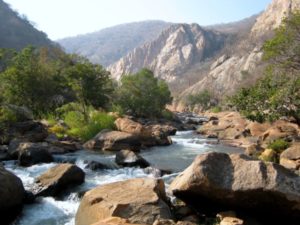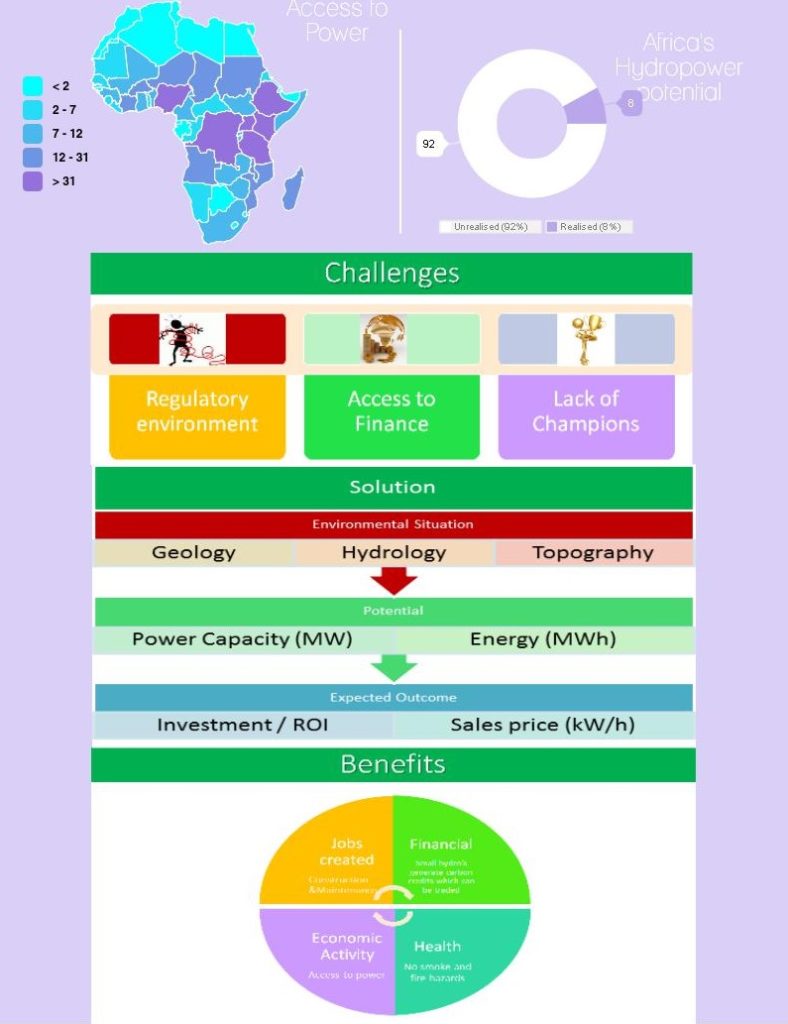Bbeautiful and environmentally friendly
By Helmo Preuss

Small hydro-electric power plants have the potential to boost economic activity in the Eastern Cape, as they can provide power to isolated rural communities where the cost of linking to the national electricity grid is prohibitive. A small hydro plant only needs a reliable source of flowing water and a height difference, the so-called head. It does not require a dam as it only diverts water from the stream or spring or waterfall into a pipe that flows into a generator and is then returned to the water course.
Even in the Grahamstown environment it makes sense to investigate this alternative to Eskom, which is seeking to raise power tariffs by 30% due to a liquidity crisis as years of above inflation power increases have dampened demand for electricity. South Africa’s electricity consumption rose by 0.5% in 2017, but it is still less than in 2007. Eskom is seeking to recover R66.6bn from consumers.
A spring at Hillandale Monastery just outside Grahamstown has only run dry once in the past 43 years and there is a head of at least 30 metres, so a small hydro plant could be built there to provide electricity to the monastery, school and the surrounding area.

In addition to natural water sources, the University of Pretoria has undertaken a major study for the Water Research Commission to look at municipal and water transfer schemes as a source of hydro-electric power. They built a demonstration plant at the Bloemwater headquarters to show the viability of the concept in municipalities that have a hilly terrain such as Grahamstown. The water comes from the Caledon-Bloemfontein potable water supply system pipeline. It supplies 96 kilowatts per hour (kWh) of energy from a pressurised conduit to power up its operational facilities, with full capacity of 360 kW. It cost just over R3 million and was built in 16 months.
The Managing Director of Nyangani Renewable Energy (NRE) in Zimbabwe Ian McKersie said small hydro plants also allow you to build incremental capacity both in terms of construction expertise as well as capital needs. The have built six plants over the past decade in the Honde Valley north of Mutare and are now looking to build a further three small run-of-river projects in Nyanga with a combined capacity of seven Megawatts (MW) at a capital cost of US$15 million.

Apart from the benefit of providing power to the national grid, small hydro projects can have, subject to their location, a community development impact as well. In the case of Nyangani Renewable Energy (NRE) of Zimbabwe, this starts with building access roads so that the heavy construction equipment and power house equipment can get to the site. It also means that transmission lines, which were prohibitively expensive to put in remote rural locations now have critical mass and can be linked to the national grid, so that even in times when annual maintenance takes place, the surrounding area still has access to power.
The next major benefit is the employment opportunities created during the construction phase. In the case of NRE the peak employment varied from 150 to 600 per project. Most (90%) of these jobs are sourced from the local community, with on-the-job training being a lasting benefit. The local community also gains from the spending of the construction workers on food, lodging in some cases and personal purchases. Following the commissioning of the project the number of employees reduces to between 20 and 30 permanent employees per project but the increased local economic activity remains a significant benefit.
In the case of NRE, the company has been keen to see the benefit of improved electricity supplies flow to the local communities and NRE has over the years helped extend the grid and provided internal electrical reticulation to surrounding schools. Some 37 schools have benefited to date at no cost to the government or community.
Improved delivery of electricity provides an impetus to local business development as people obtain confidence in reliable supplies and grow their businesses accordingly.



